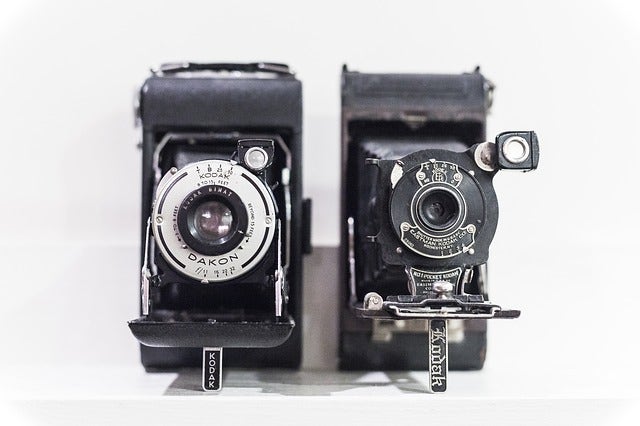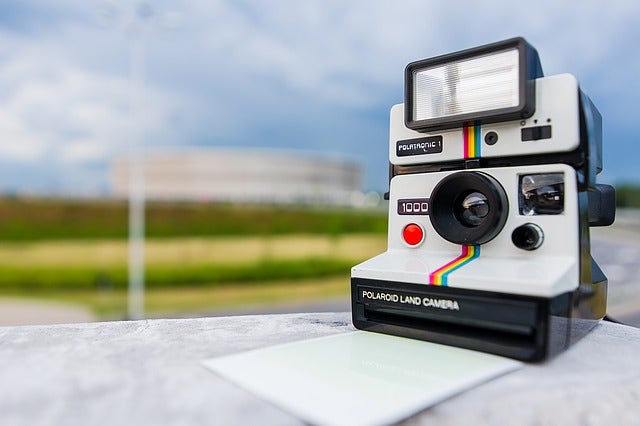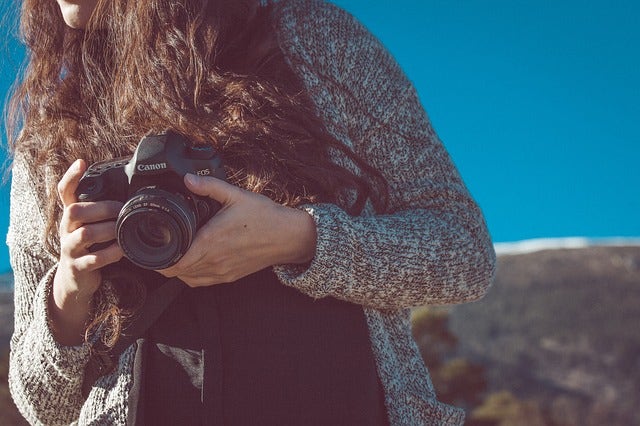
In 1839, a dapper-looking Robert Cornelius set up his camera at the back of his dad's gas lamp-importing business in Philadelphia. He removed the lens cap, sprinted into the frame and sat on a stool for a minute before returning the cap.
His reward? The world's first selfie.
From camera obscura to the digital camera, photography has come a long way. In the decades since its invention, it has helped shape both how we see the world and how we live in it. So here's our dedication to that prized phenomenon - photography.
The History of Photography
Pre-1800s: Photography in Nature
You may have heard of camera obscura. It's a natural phenomenon that precedes any man-made attempt at photography. It occurs when a scene is projected through a pinhole onto an opposite surface, upside down.
Some have suggested cavemen may have been inspired by the effects of camera obscura (perhaps through tiny holes in their tents) when creating their paleolithic cave paintings.
More recently (from the 1500s), artists have used camera obscura devices to help them with their drawings or paintings.
1810s: The First Photograph
In 1810 Joseph Nicéphore Niépce took the first photograph. Using a camera he designed, he captured an image on a piece of paper coated in silver chloride. Unfortunately, we can't show you what it looked like because the paper eventually darkened until the image disappeared altogether.
1820s: Proof that Photography Exists!
That same Joseph Nicéphore Niépce later captured images using a method called heliography. This is where glass or metal is coated with a type of asphalt that hardens in proportion to its exposure to light. When you wash the plate with lavender oil, only the hardened areas remain and voila! You have a photo.
Today, we still have one of these photographs - the earliest surviving snapshot in history, called View from the Window at Le Gras (1826 or 1827). It's an unprepossessing shot of a partial courtyard and some outbuildings taken from the upstairs window of his family's country home.

1830s: Welcome to the Daguerreotype
In 1837, a chap named Louis Daguerre (who had worked with Nicéphore Niépce before his death) created the daguerreotype. A daguerreotype photograph sits on a mirror-like silver surface, usually under a protective layer of glass. Depending on the angle you see it from, it can appear positive or negative.
While we have the daguerreotype to thank for making photography mainstream, it was hardly an ideal form of photography. The art behind it was incredibly complex: A photographer had to polish a sheet of silver-plated copper and treat it with fumes that made its surface sensitive to light before exposing it in a camera.
The image then had to be fumed with mercury vapors and treated with a liquid chemical treatment so it was no longer sensitive to light. Finally, it was rinsed, dried and sealed behind glass. Phew!
Late 19th Century: Photography for the Masses
Cheaper devices continued to be developed. This meant that ordinary people could now experiment with photography. Naturally, that made candid photos much more common.
George Eastman began to sell celluloid photographic film that could be used in his first camera, known as the Kodak. Celluloid film was not only a boon to photography but also to motion pictures.

1910s: The Modern Camera Takes Shape
The 35mm perforated film and camera we're familiar with today (well, before digital cameras, of course) began to be manufactured and sold to the public in the early 20th century.
It became the standard recognised film format in 1909. The first 35mm camera available to the public was the 1913 Tourist Multiple.
Mid 20th Century: The Rise of the Polaroid
Polaroid’s first instant camera hit the market in 1948 and reached peak popularity in the sixties. The Model 20 Swinger became one of the top-selling cameras of all time.

Instant photography was a major innovation. But just as influential was the aesthetic of instant snaps. Even today, we still try to replicate the retro look of old-school Polaroid instants using digital filters on our smartphones.
1969: Digital Photography is in the Works
In 1969, two employees at AT&T Bell Labs were told they may lose their funding if they didn't invent something to compete with current memory technology. In an hour, Smith and Boyle produced the basic plans for CCD, the sensor we still use in cameras today. What they had invented was the pixel. And it changed the landscape for photography.
1975: The First Digital Camera Comes to Town
It may surprise you to learn that the first commercial digital camera was created as a technical exercise at Kodak in 1975. Though it was impressive in its time, you'd hardly consider it high-tech today; it was built out of laboratory scrap pieces and stored the images in a cassette tape. It was never intended for production.
1980s: Analog Electronic Cameras Are in Vogue
During the 1980s, analog electronic cameras were developed. News organisations were some of the first adopters of this technology.
These cameras made it possible for journalists to send photographs over telephone lines. This meant images of major events like the Tiananmen Square protests and the first Gulf War were able to be published quickly.
1990s: Digital Cameras Became Mainstream
Advancements in digital technology led to Kodak introducing their Digital Camera System. It cost a whopping $13,000.
But technological advancements quickly lowered the costs of digital cameras. Eventually, they were affordable enough for everyone, so that digital cameras were outselling film cameras by 2003.

Early 2000s:
It was a short and natural step from digital cameras to mobile phone cameras. It's hardly surprising that the first camera phone was released in 2000 in Japan. But the first known photo taken on a camera phone and shared publically actually occurred years earlier: in 1997, to be precise.
There's something in the idea of instantly sharing your precious moments (and not so precious moments!) so that the camera phone proved a hit. By 2010, the worldwide number of camera phones amounted to more than a billion! And today, many would consider a phone without a camera to be a relic.
What Next?!
While the technology has progressed almost beyond recognition, our attitudes will never change. And what made the immediate shareability of a Polaroid instant pic so popular in the mid 20th century is making digital cameras with Wi-Fi capabilities equally enticing today.
Connectivity is the next step in our photography revolution. Many of the latest models of any camera - be it mirrorless, DSLR, or point-and-shoot - boast Wi-Fi capabilities that mean you can immediately upload your holiday snaps to your social media accounts or send them off to your loved ones.
Today, cameras play an important role in keeping us all up-to-date with each other's news and stories. It's unbelievable we've come this far, but we can't wait to see what's next.
For more on the world of photography, check out our Camera House blog. Alternatively, browse through the latest innovative camera tech in our online store today.

